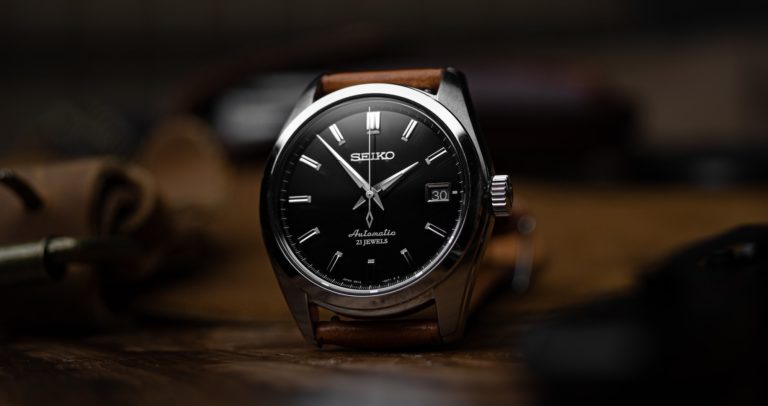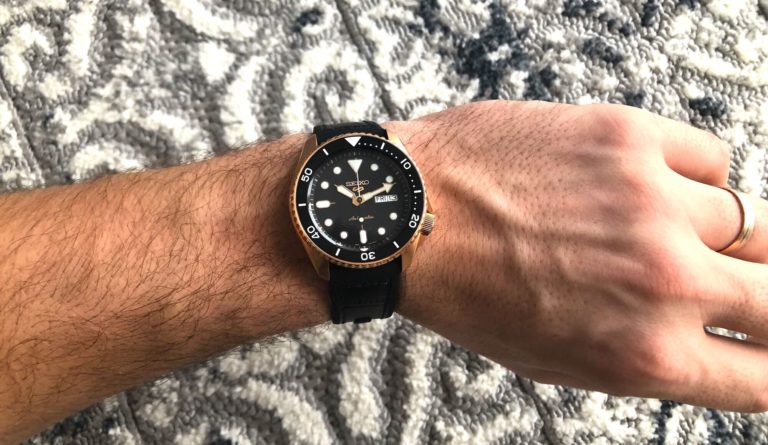Affiliate Disclosure: As an Amazon Associate I earn from qualifying purchases. Details
We all expect a watch to show a precise time. In the end, that’s the whole purpose of it.
However, when browsing for wristwatches on the vast web, one of the most significant differences that stick out is the relative inaccuracy of automatic watches in comparison to the quartz equivalents.
Why is that so? After all, mechanical and automatic watches cost significantly more, meaning, they should provide value for money. Is an automatic watch accuracy sufficient for convenient use?
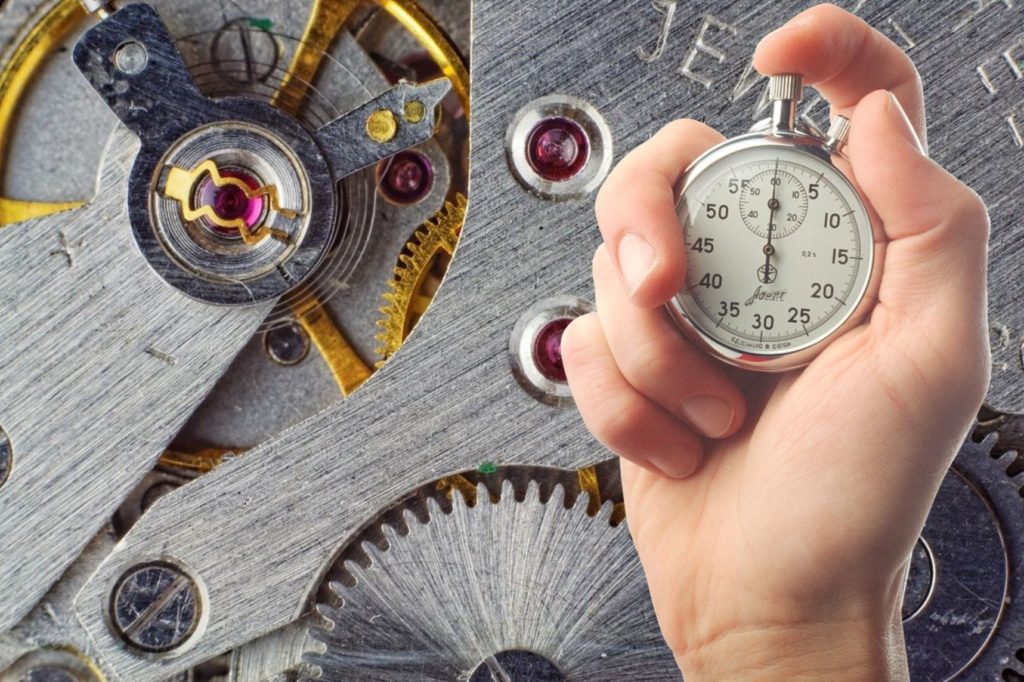
We’ll look into the factors that define the accuracy of automatic movement, and a lot of other questions that arise with the mechanism, such as the measurement of accuracy, whether it’s possible to adjust it, and the limits defining an accurate automatic watch.
The Working Principle of an Automatic Watch
Automatic watches consist of several parts that are vital for the movement. The six principal parts you can find from any automatic timepiece include:
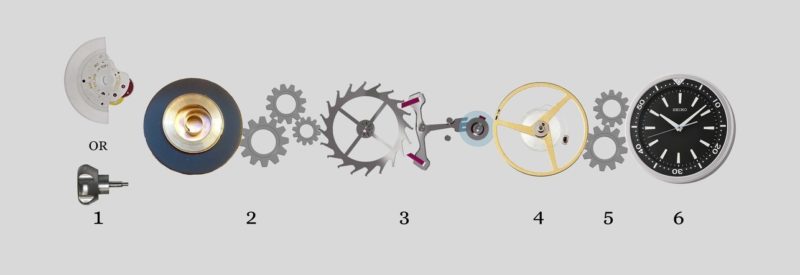
1) A rotor – a half-circled metal weight that spins and whirls freely 360 degrees on the wrist, in that charging the mainspring
2) A mainspring – stores energy from the rotor and transfers it forward
3) An escapement – measures the energy to equal parts; allows the gears to advance by a certain amount, while also keeping the balance wheel vibrating by giving it a push with every swing
4) A balance wheel – the timekeeping element which oscillates back and forth at a precise rate with the help of a hairspring
5) The gears – transfer the beats to the watch hands
6) The hands – indicate time
Read more: Working principles of automatic watches
These are the parts you’ll find from any automatic watch. Still, with a more intricate watch that also features a chronograph function, a calendar, or an alarm, the more complicated the movement becomes. Every additional feature that is added to the mechanism is called a complication.
The more complicated the system is, and the more parts and transitions it has, the higher is the probability of a time deviation. That is due to the various laws of physics affecting each and every part of the mechanism.
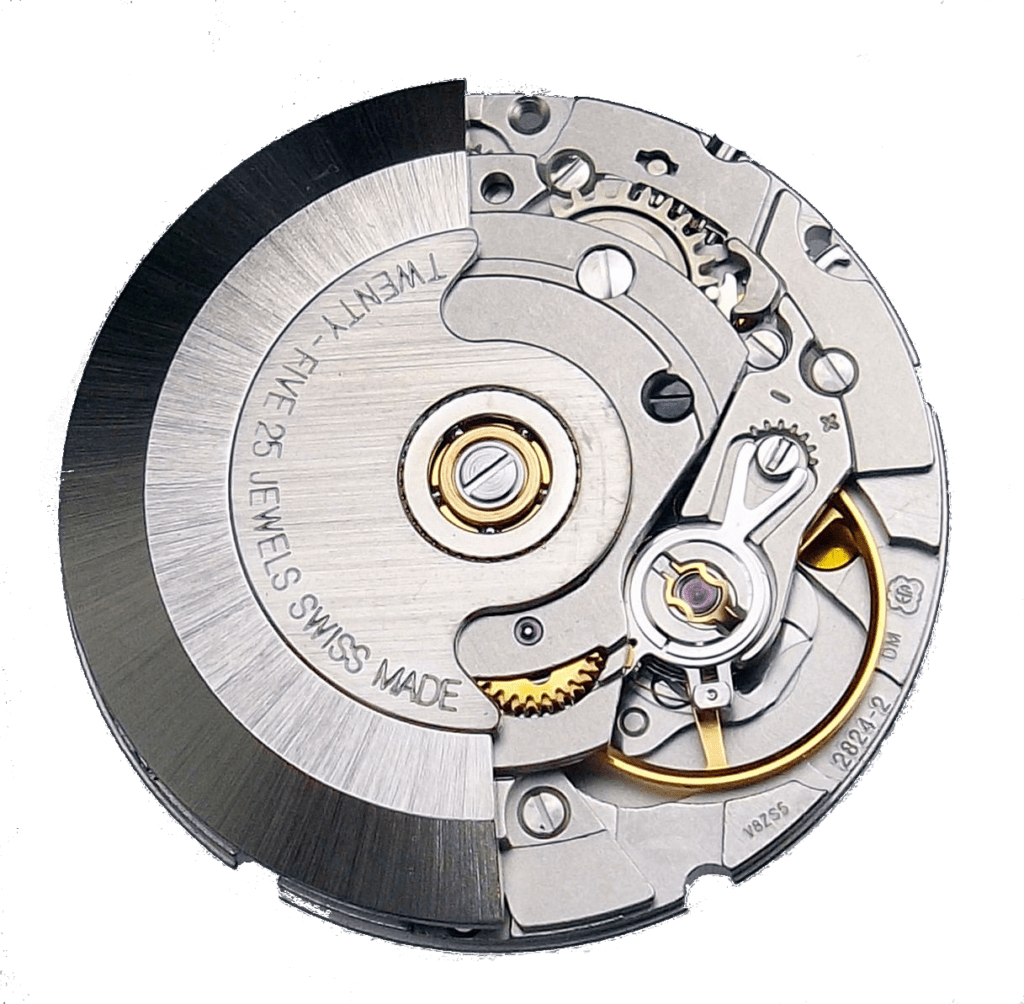
Now, consider a watch with over a hundred small pieces under the rule of the laws of physics, and you’ll understand why it cannot keep a 100% accuracy level.
Another factor affecting the accuracy of an automatic watch is the number of oscillations a balance wheel takes.
A standard automatic wristwatch has a balance wheel executing six swings in a second, or three oscillations (one oscillation equals two swings – back and forth). That is the frequency of 3 Hz.
However, a typical quartz watch has a rate of 32,768 Hz due to the piezoelectric attributes of quartz crystal. A simple theory is that the higher the frequency, the more stable it is in the core, and thus provides better accuracy.
But what causes the instability of the frequency?
Temperature Fluctuations
That is the most significant factor in determining the stability of a movement. Metal has a particular attribute to swell in the heat and shrink in the cold. Since watch movement consists of numerous small metallic parts measured to a precise size, then even the tiniest of components swelling or shrinking can already cause the whole system to deviate.
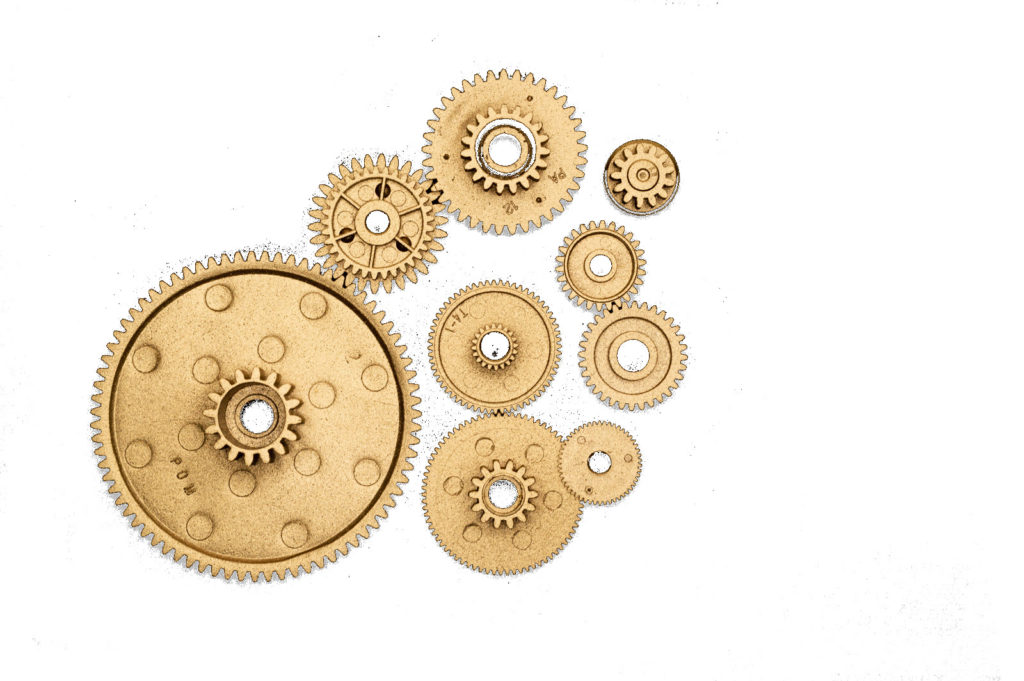
The deformation of metal parts starts to notably affect the accuracy at temperatures below 46F (8C) and above 100F (38C). If an automatic wristwatch receives a stable temperature, preferably close to the center of the noted margins, it gets least affected by this physical aspect.
Magnetism
Magnetism is another influencer of accuracy. Magnetic metals, such as iron, cobalt, and nickel, can cause the time to deviate by affecting the parts through magnetic fields.
The raw metals and the mixture of them is present in cell phones, handbag clasps, TV and PC speakers, hairdryers, etc. In common sense, keeping all the previously mentioned appliances from the vicinity of the watch is almost impossible. But the less it stays in the range, the less it receives any unwanted influences.
Wear & Tear
During regular wear, a watch goes through various conditions and impacts, which eventually have an effect on accuracy.
The worst that can happen to a watch is a strong physical shock, such as dropping down from heights. The moving parts stop, after which they take some time to restore the required frequency.
In the worst-case scenario, some parts may break or start to malfunction in that causing the time to lag or gain.
Gravity
Gravity has a direct effect on the functioning of a timekeeping mechanism. If a balance wheel, the most sensitive timekeeping part, stays in one position for too long, it starts to lose or gain pace between the swings.

The balance wheel has been adjusted to several positions to compensate for the losses or gains, differing from model to model. Finding the optimum position for the watch to rest during the night helps to neutralize the drift during wear.
Friction
And finally, there’s this common physical factor that is present in all kinds of mechanical movements – the friction. It occurs when two parts move, and while in physical contact, they inevitably wear, in that causing the instability.
Now, if you think of a car that runs on six cylinders, for example, and suddenly one of them stops functioning correctly for an unknown reason. Will it affect the speed and power of that car? It definitely does.
The same example goes well with the mechanical movement – if one of the gears starts to wear out, the whole system gradually becomes imprecise.
For centuries, friction was one of the most significant factors that hindered the precision of mechanical wristwatches. After the introduction of watch jewels in vital parts for reducing the problem, the accuracy levels enhanced greatly.
However, even the jewels can’t eliminate the problem entirely, but only alleviate it to some extent.
What Is Acceptable Accuracy For an Automatic Watch?
The levels of deviation differ from caliber to caliber, but an acceptable accuracy for an automatic watch should be +/- 20 seconds per day the most. You’ll definitely find wristwatches with more precise calibers, but they’re the ones that cost significantly more too.
If you have the resources and are willing to pay extra, you may end up with a self-winding watch losing or gaining just a second or two per day.

An ordinary automatic averages +/- 5 seconds a day, while watches below that are already considered excellent in terms of precision.
The evolution of mechanical timepieces has seen the accuracy develop from minutes to only a fraction of it. Considering the physical factors that so greatly affect the precision, it has been a long and strenuous journey in achieving the accuracy we have in our automatic watches today.
But what are the methods for enhancing accuracy that manufacturers have applied so far?
Accuracy Enhancements
Movement manufacturers have achieved accuracy by using better quality materials, implementing a more suitable design for inner parts, improving the lubricants, controlling the temperature and gravity, and many more minor details that, put together, form an accurate timepiece.
Chronometers, the certified precise mechanical watches, have gone through the previously mentioned improvements and are the epitomes of reliable mechanical wristwatches.
Chronometer Watches
A chronometer is a mechanical or automatic watch that has a certified average daily rate of -4/+6 seconds of deviation, but not more. Typical chronometers average about -3/+3 seconds per day, while a second of difference is rated as an excellent result.
Not all the watches can call themselves chronometers – only COSC-certified timepieces that have passed the testing receive this prestigious appellation.
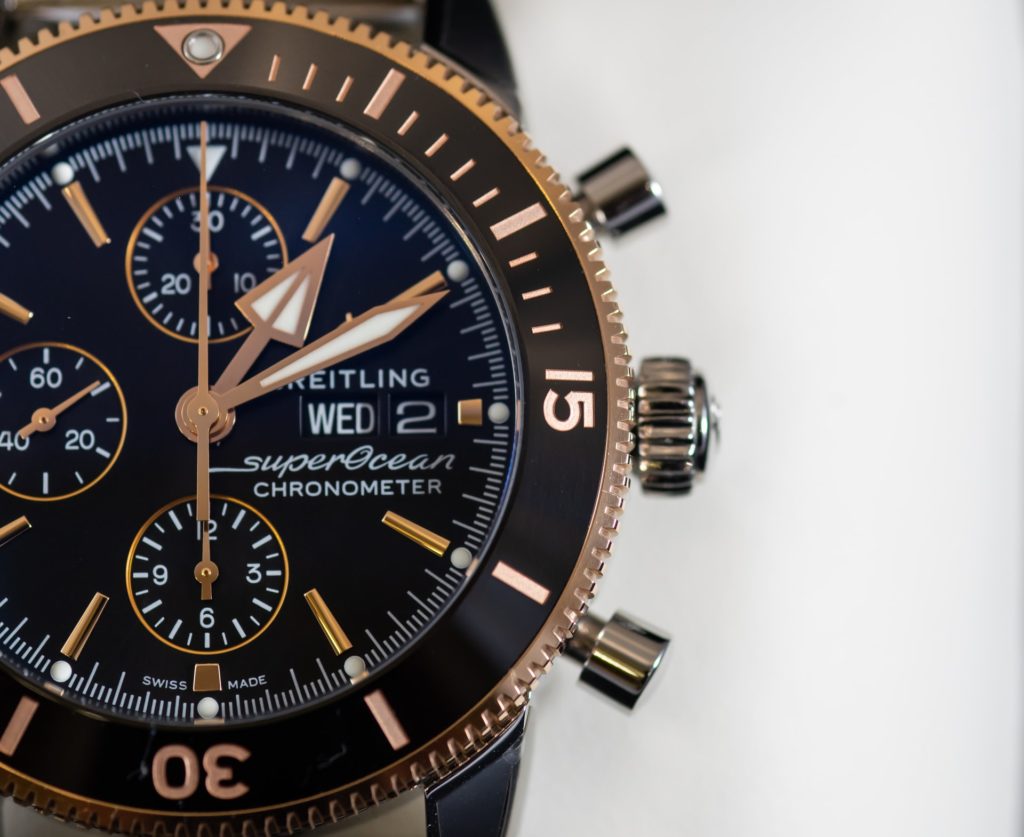
COSC stands for the Official Swiss Chronometer Testing Institute aimed to certify the accuracy and precision of Swiss watches and movements. Only 3% of Swiss watch production receives the certification with Rolex, Omega, Breitling, and Panerai being the brands with the most chronometers.
It needs clarification that not all the brands thrive for this recognition. The Japanese and Germans, for example, use their in-house testing for achieving the desired results. So an automatic watch without the COSC-certification can sometimes be even more accurate than many chronometers.
The COSC testing procedure lasts for 15 days and involves five testing positions at three different temperatures. The core of the process is to confirm the reliability of the mechanism against temperature fluctuations and gravitational effects.
Another measure for minimizing gravitational impact, though a long time ago, was the tourbillon approach. Nowadays, the outcome is rather a piece of art than an effective method.
Tourbillon Watches
The French word tourbillon stands for “whirlwind,” where the balance wheel and escapement are placed in a cage to deny the effects of gravity, for the sole purpose of enhancing accuracy.
The cage rotates continuously at a slow pace to average out positional errors. The complication is often visible on the dial, so recognizing tourbillons is rather easy.
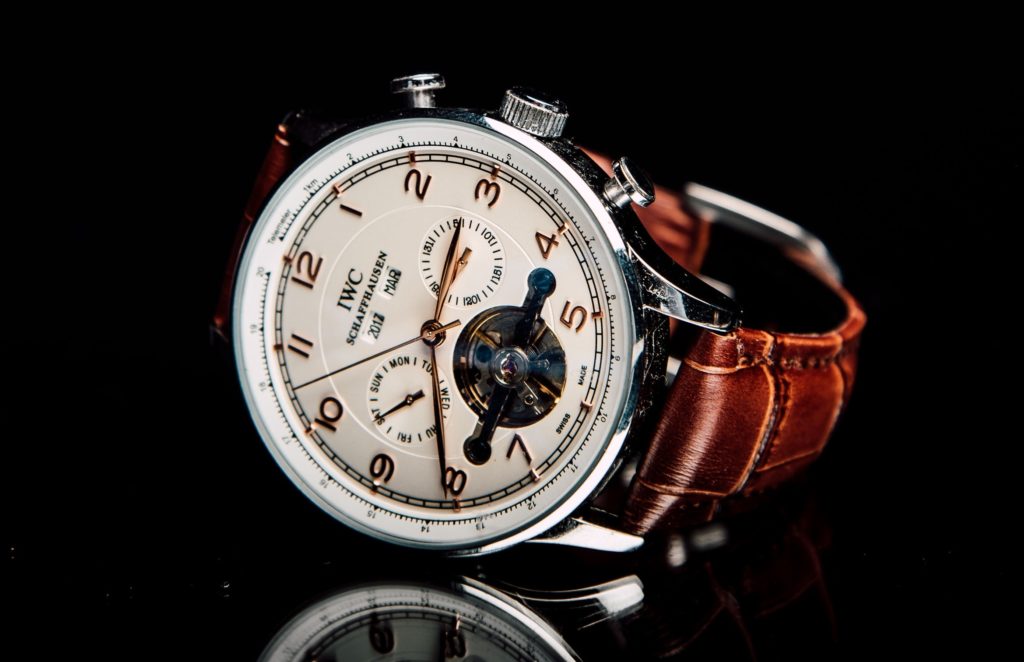
Nowadays, mechanical watches can average out the errors without that approach, and often result in better outcomes, so a tourbillon is instead a novelty and a demonstration of watchmaking craftsmanship. However, at the time of its prime, tourbillon technology was a significant enhancement for manufacturing precise(r) mechanical movements.
In the recent decade or so, the emergence of Chinese watchmaking has proved that tourbillon mechanisms don’t necessarily have to cost tens of thousands when some affordable tourbillon watches are available for less than $1,000. Although the quality may not be on par with Swiss equivalents, they nevertheless are worth checking out.
We’ve now extensively discussed the exactness of wristwear, and thrown in a bunch of numbers, which inevitably raises a concern of how to personally measure your own watch’s accuracy. Luckily, getting the relevant results won’t cost you a visit to a watchmaker.
Two Ways to Measure the Accuracy
The first and most convenient option is to use a dedicated app, such as Toolwatch or WatchCheck. Apps come and go, so the variety of specialty applications varies significantly, but the two have been around quite a while and have received positive feedback from users.
In essence, the app synchronizes your mobile service with a reliable timekeeping entity, for example, Network Time Protocol or GPS, and in this calculates the deviation per day.
But beware, you won’t get away that simple as the full measuring process still requires some attention from you. Every app works slightly differently, so follow the instructions carefully.
Another option to check the accuracy is an old-school manual measuring method, which requires personal scheduling commitment.
Use a computer’s time, or any other easily traceable and reliable option, by marking down the exact time on your automatic wristwatch when a full hour appears on the computer. Check the result the next day, or exactly a week after, by recording the result from the watch at the same full hour you started the measurement on your PC, and eventually calculate the deviation.
If the timing period is one day, you already have the result, but in case of an extended period, divide the variation with the number of days the procedure took place (for example, by seven for a week-long duration).

Timegrapher, a particular device for measuring mechanical and automatic watch accuracy, gives the most exact results, though it won’t come cheap. If you’re an aficionado taking the concern seriously, feel free to invest in it.
How to Adjust the Accuracy of an Automatic Watch?
If a watch has too broad driftage from the exact time, a consideration towards adjusting it might arise. The causes of a time drift depend on various aspects – the quality of the movement, the regularity of wear, extreme temperature fluctuations, and so on.
For an automatic timepiece to function appropriately, it needs systematic wear. It’s not a quartz watch that works perfectly until a battery runs out after a couple of years of wearing. The system of a self-winding mechanism is built to be always in motion, and if it’s not, the intrinsics start to malfunction.
When you’ve worn your watch regularly and still encounter inaccuracy, it’s a sign of a serious problem that desperately needs servicing. Professionals deal with these matters every day, so the most convenient and nerve-sparing option is to go for skilled care.
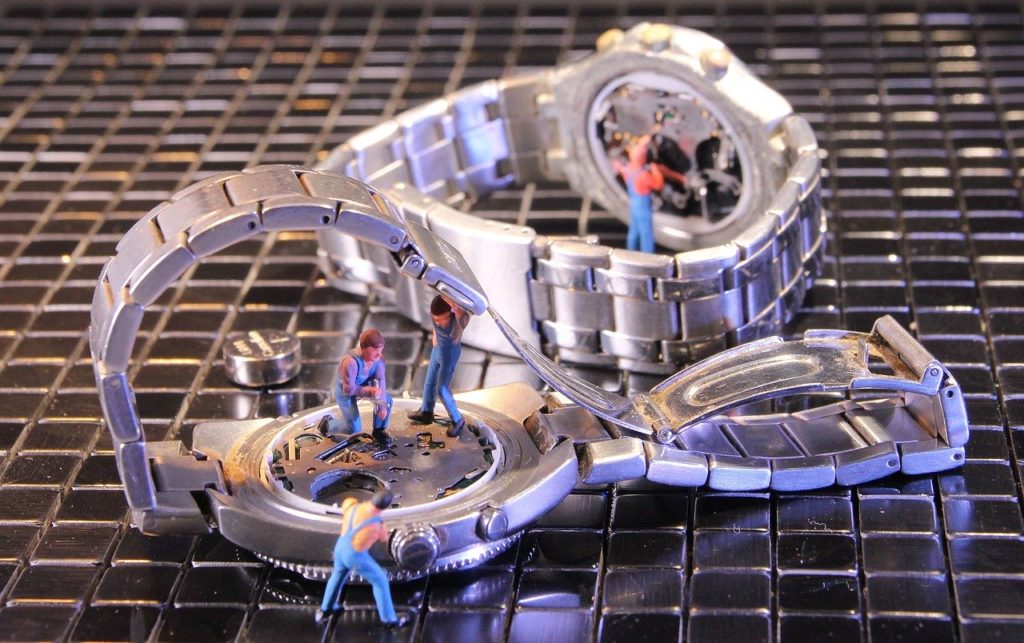
In the case of irregular wear, a DIY solution is available and has been distributed by some watch manufacturers and specialists. Here are some tips:
1) If your watch is losing about 10-20 seconds per day, place it flat on the table with dial upwards, and keep it there for a couple of nights during your sleep
2) For losing the seconds, lay the watch vertically with the crown downwards
3) If it’s missing a considerable amount of seconds, you should put it vertically, but this time the crown upwards
The tips are for excluding a minor problem and won’t solve any serious mechanical issues. An ordinary automatic watch requires upkeep every 3-5 years. Thus the well-being of your automatic timepiece needs following the schedule and guidelines of use.
Final Take
For the accuracy chasers – no, to be frank. But for the rest, an automatic watch is, in no doubt, a piece of jewelry to go for.
Nowadays, a wristwatch is an accessory (in fact, one of few men can proudly wear) rather than a precise time-tracker. As long as smartphones are telling the time for essential and correct recordings, you won’t need a watch for more than just a rough indication.
Aesthetics, intricate mechanism, and useful features are only a few arguments weighing over the concern of superb automatic watch accuracy.
You may also like:
Affiliate Disclosure: As an Amazon Associate I earn from qualifying purchases. Details
- CIGA Design Blue Planet Gilding Watch: The Best Conversation Starter Around? - April 2, 2023
- CIGA Design X-Series Review: The Most Skeleton for the Money? - July 7, 2022
- What Is A Dive Watch? A Complete Guide - May 17, 2022

